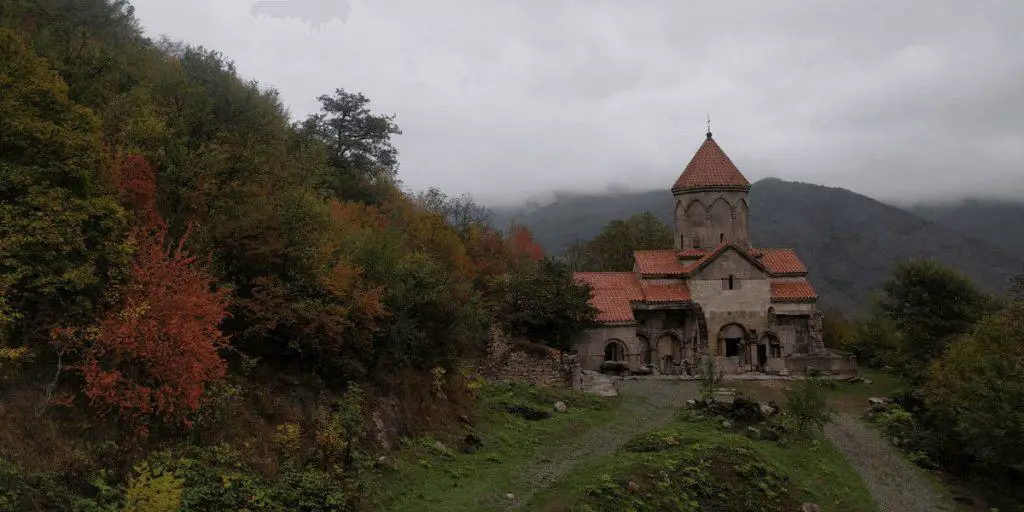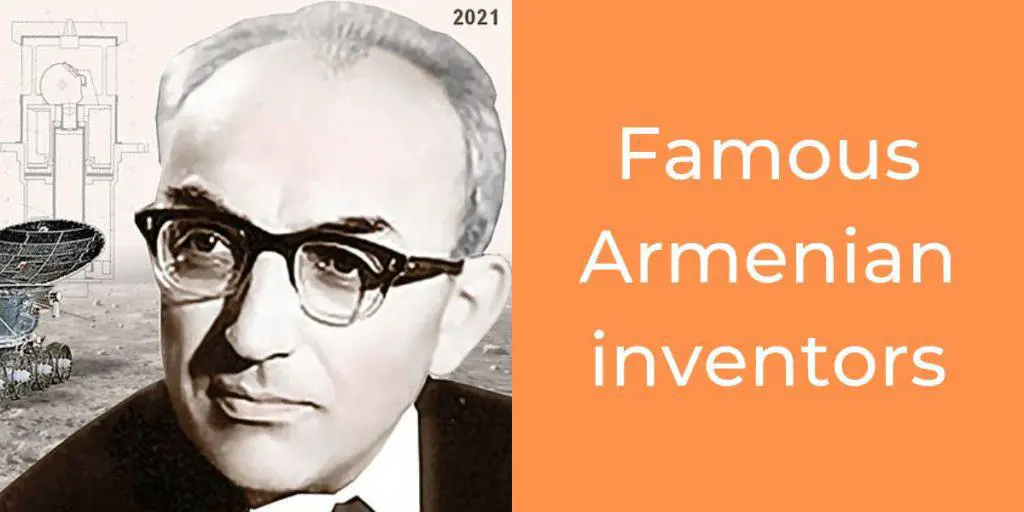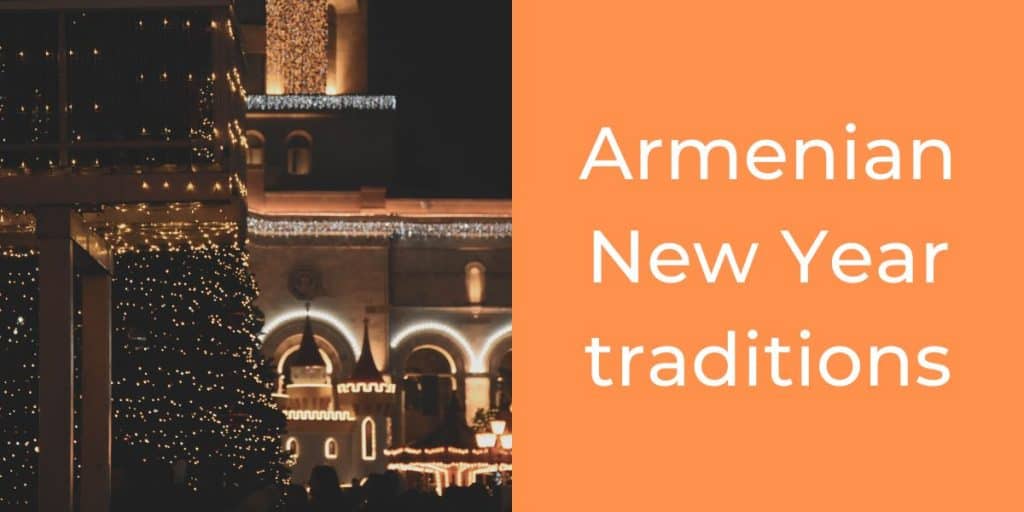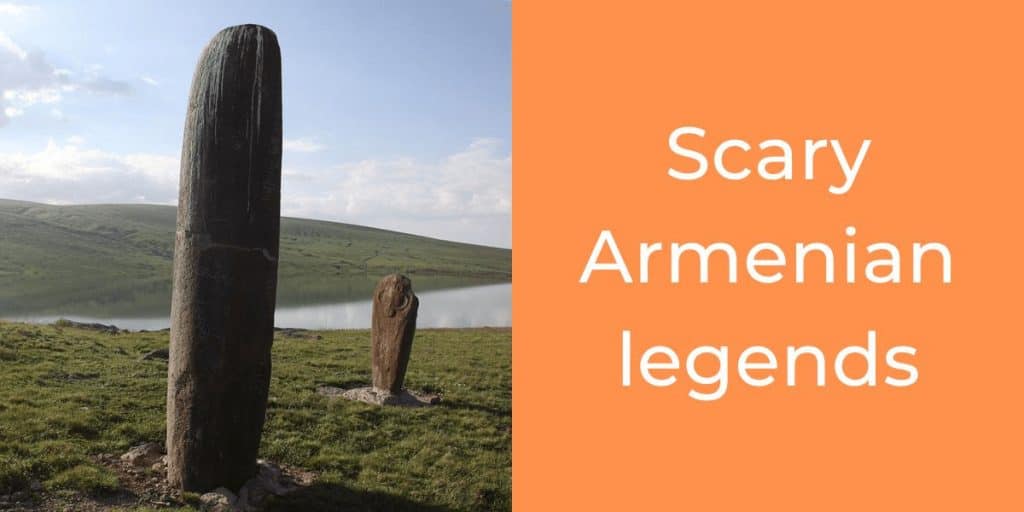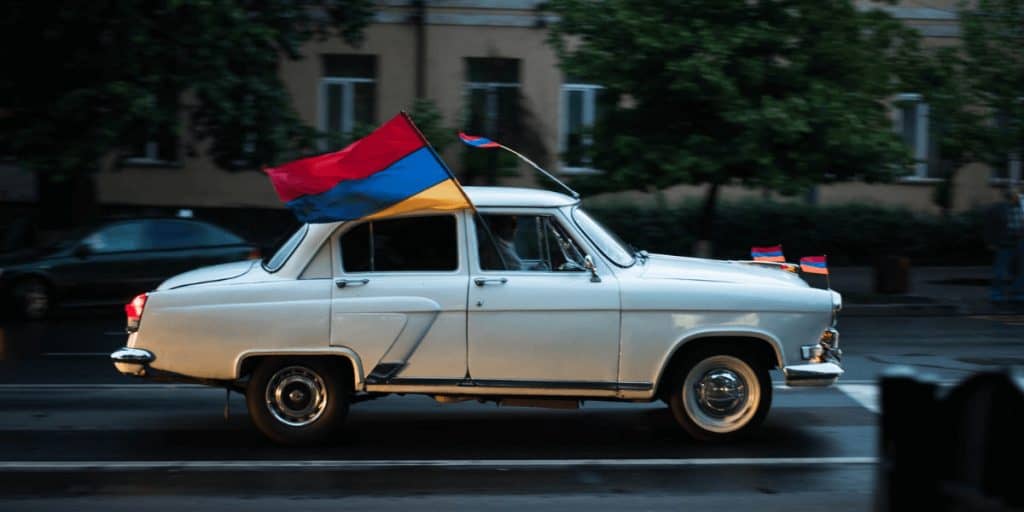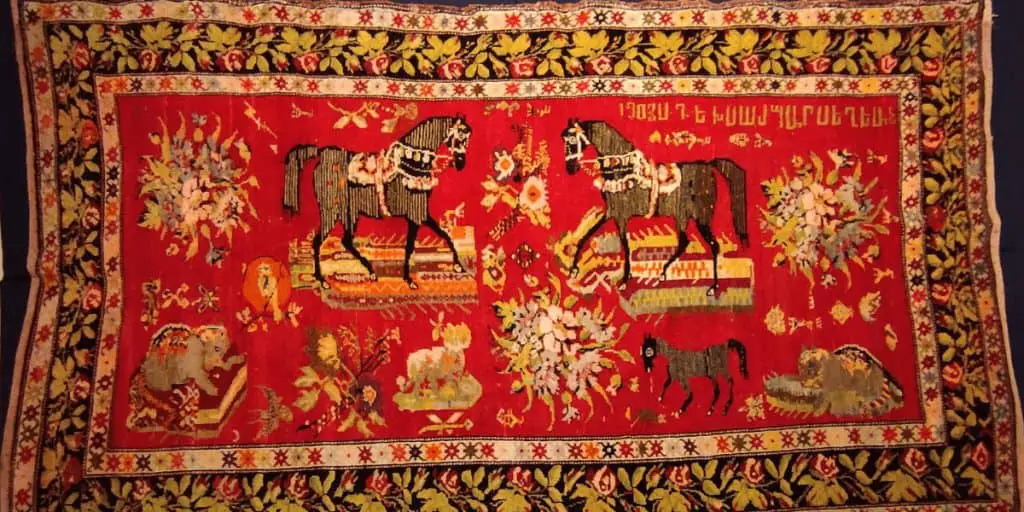Armenia is surrounded by Muslim countries, so it’s pretty easy to get confused about the Armenian religion when looking at the map. Most often the main assumption is that Armenia is Muslim, too, but it’s not. It’s a little Christian country which has a long history of struggles to save its religion along with the Armenian language. These two have walked hand in hand through millennia and it’s worth knowing about.
This post is dedicated to the Armenian religion, its history, variations and beliefs. If you find this post informative, let me know on Instagram or Twitter, with #ArmeniaTravelTips.
How it all started: the history of the Armenian religion
As tradition tells us, apostles Bartholomew and Thaddeus were on a mission to preach Christianity in this region in the 1st century. Apparently, the religion got more and more popular and gained followers. As a result, as early as the beginning of the 4th century, the Kingdom of Armenia became the first country to officially adopt Christianity as a state religion. That’s exactly why we call it the Armenian Apostolic Church.
Before Christianity, there was Paganism
Before the introduction of this new religion, Armenia’s main religion was Hetanism, a.k.a the Armenian paganism. This was a native religion, that’s to say, an ethnic belief system. The conversion wasn’t smooth though. It was imposed by the ruling dynasty and pagan temples were forcefully destroyed. On the other hand, the Armenian Apostolic Church incorporated many Pagan tradition and gave them a new interpretation. An example, is Trndez when Armenians jump over the fire as a festive event.
However, now that Armenia has been a Christian country for more than 17 centuries, nobody really speaks about this part of history. Though Armenia is not a religious country, religion has always been infused with politics. As we know, writing and recording historical events has been funded by the state or influential people, so the price this nation paid for adopting Christianity was omitted from the history on purpose.
What’s left from the Armenia’s Pagan past
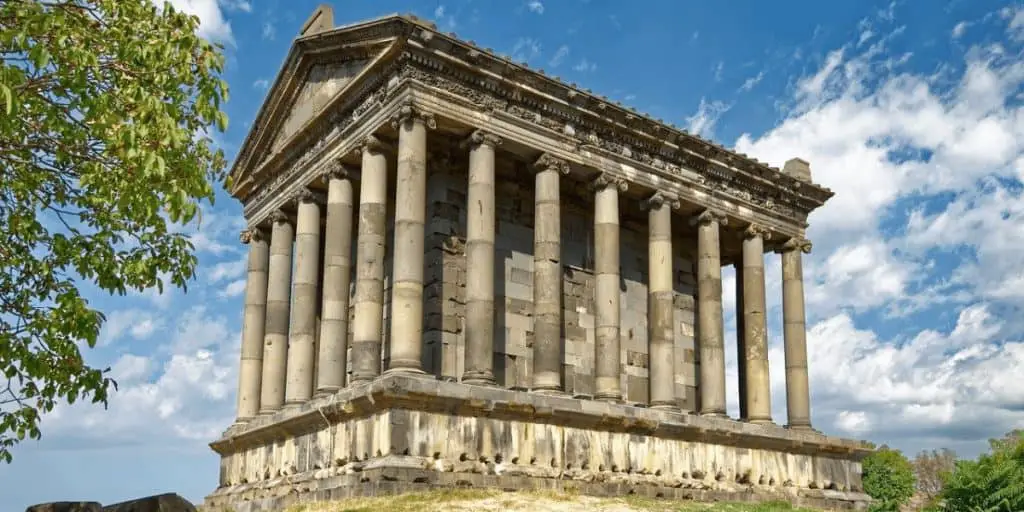
Unfortunately there are very few remnants of the Armenian pagan past. The only major surviving monument is Garni temple, one of the most-visited venues now. Some other traces of paganism were found during recent archeological excavations in Hoghmik village in Shirak region.
Other than that, our pagan culture traces are present in many traditions and cultural events. Many present-day religious events and celebrations have pagan roots, as most probably that’s how it was easier to make the nation start celebrating holidays of this new religion.
The role of religion in Armenia and minorities
Even though there are not so many actively practicing religious Armenians these days, the Armenian identity is deeply connected with the Christian identity of our nation. That’s why when asked about the religion they follow, most Armenians would promptly say they’re Christian, even though they are not practicing their religion much. As a result, official studies suggest that Armenia is the second most religious country among 34 European countries [source: Pew research].
More than 92% of religious people identify themselves as followers of the Armenian Apostolic Church. This number shouldn’t be surprising, as 98% and more people living in Armenia are ethnic Armenians. And as I mentioned earlier, Christianity has become infused with Armenian ethnicity.
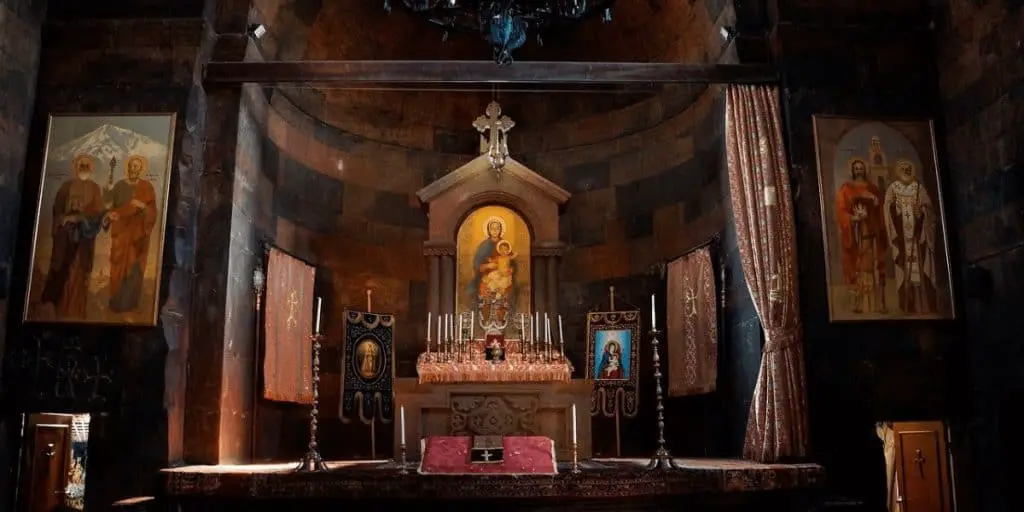
The special church in a secular country
According to the legislation, Armenia is a secular country and doesn’t have a state religion. The Freedom of faith and religion is legally there, so all religions are equal. Unfortunately though, there is no anti-discrimination law yet to fully protect religious minorities. Along with this, the Law also states the importance of the Armenian Apostolic Church and its role in uniting the grand majority of the population. It’s also exempt from taxes whereas religious minorities are not.
Religious minorities and their places of worship
Religious minorities comprise other branches of Christianity like Evangelical and Catholic. Yazidis, Mormons, JWs, Pagans, Protestants, Molokans and Muslims. Altogether make up only 3.6% of the whole population. The number of non-religious people in Armenia is 4%.
Btw, sometimes I come across a misconception that Armenia is not safe for Muslims. I looked into the data and spoke to Muslim travelers in Armenia to correct that misconception. Check out my separate post about that linked above if that’s interesting for you. If you are a traveler from Indian you might also be interested in reading this post specifically about their safety in Armenia.
All religious minorities are allowed to build, visit and perform ceremonies in their places of worship. The Blue Mosque in Yerevan is a vivid example. Pagans hold rites and ceremonies in Garni temple, Zorats Karer astrological monument in Syunik and in similar outdoor spaces. JWs, Mormons and Evangelical groups have their worship buildings and shrines in different big and small towns.
Some religious groups usually live in small communities or are spread around a geographical area. You can see new and old beautiful Catholic churches in Gyumri, Bavra, and many other villages where Catholic Armenians live. Yazidis have one major temple in Aknalich village, the largest Yazidi temple in the world!
The religious capital of Armenia
The heart of the Armenian religion is located in the town of Ejmiatsin. This town is just a 30 minutes ride from Yerevan. Though the area of the town isn’t big there is an impressive number of churches and cathedrals there.
The major one is Ejmiatsin Cathedral, which, together with the surrounding churches is in the UNESCO heritage list. If you want to know more about why it is there and what you should wear when visiting it check out my post about UNESCO sites in Armenia.
Ejmiatsin Cathedral was the first Christian church built in the Armenian Highland. It is the residence of the Armenian Apostolic Church and has always been a pilgrimage venue for all Christian Armenians. It’s also home for the oldest university in modern Armenia which is religious too – the Gevorkian Theological Seminary founded in 1874.

What does the Armenian religion believe in?
The Armenian Christianity has adopted the Christian doctrine of the Holy Trinity. That’s to say, the Church believes that there is one deity – God – represented in the form of the Holy Trinity. One God in 3 manifestations, Father, Son and the Holy Spirit.
This doesn’t mean that Jesus is only the Son of God, no, this means Jesus is also God, as a part of the Holy Trinity. So each of these components is making up God as we know it.
Symbolism in the Armenian religion
The main symbol is the Cross which doesn’t include Jesus on it. This is mostly the main symbolic difference between the Armenian Apostolic Church and Catholic Church. The Catholics use the symbol of Jesus crossed, while the AAC considers the cross as a tool for salvation rather than death. That’s why it’s generally accepted that the Cross shouldn’t depict Jesus Christ, but instead be a symbol of resurrection. So don’t be surprised if the Cross symbol looks different than what you generally see in Europe and elsewhere.
However, there is one place where there is a huge cross with Jesus: you’ll find it in Gyumri, the second city of Armenia. The cross is inside the central “7 Wounds” (“Yot Verk”) Church, which is located at the central square. It’s the residency of the Shirak eparchy bishop. The church has another name: Cathedral of the Holy Mother of God, so if you see this name on a map, this story is about the same church.
How did a Catholic Cross become a part of the Apostolic Church?
Back in the USSR times, where religion wasn’t practiced or allowed, atheism was widely imposed on all nations. Armenia also had to close all its churches. Most were used for agricultural purposes, served as storage bases or a secure place to store construction materials. The only operating Church in the whole Shirak region was the central one. Even though there were no liturgies or other ceremonies held, this was the only one that was kept in a decent condition.
When the communist regime imposed the closure of the Catholic church in Arevik village, as the building had to turn into a residential place, the community decided to save the huge cross with Jesus on it. The only way to save it and still be able to visit and worship was moving it to the only operating church. It was so big that it wouldn’t fit in a car and there was no time to find a truck. So 15 men walked from Arevik to Gyumri (7kms!) holding the cross on their shoulders and asked the bishop to place it inside the church. The Cross has been there since.
Rites and ceremonies
The religious rites and ceremonies like the Holy Liturgy, wedding, baptism, burial and memorial ceremonies are held by priests and religious persons of higher positions. The singing and recital parts of those ceremonies are done in Grabar, the ancient Armenian language. If you want to know more about the beautiful history of it, here’s my special post on the Armenian language.
The Holy Liturgy (Arm.: Սուրբ պատարագ [Sourp Patarag]) is held every Sunday and on special days and celebrations like the Christmas eve or the Easter week. It was written by Makar Ekmalean, a talented composer. The songs and melodies are soothing and relaxing. In case you have a spare hour on a Sunday while in Armenia, make sure to enter any church between 11 am and 1 pm. The atmosphere of songs, incense, faith is unbelievable, even for a non-religious person!
Here’s what the melodies sound like:
Holidays and celebrations
The Armenian church has its own calendar of holidays and each of them have a special celebration. Armenians celebrate Christmas on January 6, just like the Orthodox church.
And just like many other Christian churches, the religious day starts after 6 pm, so the eve of any holiday is already a part of that holiday. Many of widely celebrated holidays of major importance, like Christmas, are officially non-working days in Armenia. Well, because for at least 95% of people in Armenia are Christians.
There are 5 grand religious holidays (Feast of Jesus Christ) throughout a year:
1. Christmas and Epiphany
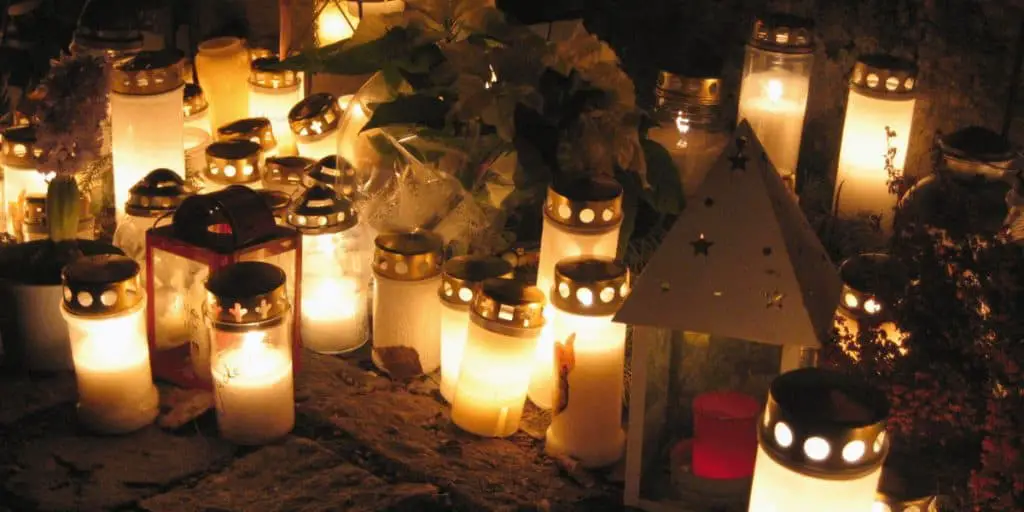
Christmas Eve, January 5, is also celebrated in a beautiful way. The evening liturgy takes place after 6pm and a special huge blessed candle is lit in the middle of every church. People visit churches and take the lit candle home to start the year with a blessing. Typically on that day you will see everyone holding bottles or candle holders walking home. Some people also take candles to the cemetery to pass the blessing to their loved ones.
The actual Christmas day also starts with a special liturgy. On this day water is blessed, so people go to church with their bottles and containers to take some of the blessed water. It’s believed that blessed water has healing properties.
Despite being a fixed-date holiday Christmas is a non-working day and it’s a day to spend with your family. At dinner, people eat fish and many other dishes that are in abundance after the New Year celebration! 🙂
2. The Easter – Resurrection Day
The Easter (Arm: Զատիկ, Zatik) is a moveable holiday. The celebration date depends on the Lunar cycle. This holiday is always on the first Sunday during the spring full moon, typically at the end of March till mid-April.
The whole week before Sunday is Holy. Each of weekdays is a special occasion and has their own liturgy rites and celebration ceremony.
This will sound strange, but in Armenia the Easter has never been in any way associated with bunnies until recently. The symbolism includes mostly eggs and chicken. The fun game of the Easter is playing with eggs and trying to beat the competitor. The typical meal on an Easter dinner includes fish – trout most of the time – and rice pilaf with dried fruits and raisins.
3. Vardavar – Feast of the Transfiguration

Vardavar is indeed the most interesting holiday among all these 5. It’s a movable holiday celebrated in July and people drench each other in water! Yes, that’s an absolutely fun activity on a hot summer day! Well, the word “Vardavar” itself has many unconfirmed theories on its etymology.
But there’s a generic acceptable explanation nowadays which is almost always pushed by people who are not linguists. According to them, the word is related to the modern Armenian word “vard (վարդ)” which means “a rose” and “var (վառ)” meaning “to burn”.
The celebration tradition goes back to pagan times. Back then Armenians had an observance holiday dedicated to Astghik, the goddess of love, beauty, fertility and water. And as the legend says, on that day they used to give roses to the Goddess and pour water on each other thus sharing the blessing.
According to another legend, there was a game pagan young people played. They used to line up in two parallel rows facing each other but quite far. Each was holding a bucket full of water and rose petals and at their feet each had an empty bucket with a lit candle inside. Everyone tried to pour rosewater and put out the candle of the person in front of them.
Nowadays it’s just a fun celebration, some kind of a water festival. So if you’re into crazy experiences, make sure to check ahead what date Vardavar is going to be on.
4. Assumption of Mary – grape blessing day
This holiday is always celebrated on the nearest Sunday, between August 12-18. People usually don’t sell or eat grapes until this day, when grapes are blessed. It happens so that grapes usually are tastier and better after, as the harvest season is mid-August. After this holiday, locals also start making wine.
So why does the church bless grapes? And why especially grapes and not any other fruit? You see, the explanation of the church is that this is the only fruit real wine is made of. And wine symbolizes the blood of Jesus Christ. And the blessing ceremony happens on Mary’s Assumption day, at the ending part of the liturgy.
People usually buy grapes and take them to church for blessing. After, they take just a little cluster home for all family members to taste at least one grape. It’s said that this ritual is opening the harvest season and thus blessing all the harvest till the next year’s autumn.
5. The Feast of the cross
This one is a pure religious holiday, usually celebrated on Sunday, between September 11-17. In some regions, people craft handmade crosses and decorate them with colorful flowers, especially purple basil. People consider basil the flower of the cross.
My thoughts on the Armenian religion
Along with all the imbalance and drawbacks of an imposed over-religiousness in a country where religious minorities are de facto discriminated against, the Armenian religion has beautiful manifestations.
If you are willing to explore the most interesting aspects of religion as part of the country’s culture, this post may become handy when planning a trip. You can also download the Armenian Bible app if you like to read it on your way. If you find it insightful, please let me know on Instagram or Twitter, with #ArmeniaTravelTips.
Featured image credits: @meginnie
Please help me make Armenia more popular!
